Many property owners purchase a metal roof because it’s low maintenance, can last 40+ years, and can be engineered to perform to high standards set forth by the industry.
Luckily, the upkeep needed to maintain a standing seam metal roof is minimal, especially if the roof was correctly installed. That being said, you shouldn’t overlook performing regular maintenance on your metal roof, as it could make or break a system, especially if a serious problem exists.
Here at Sheffield Metals, we know how valuable your time is, which is why we want to help you streamline the process for maintenance that should be performed on your metal roof.
Ahead in this article, expect to learn about:
- Why it’s important to maintain your metal roof.
- Surface-level metal roofing maintenance tasks.
- Structural metal roof maintenance methods.
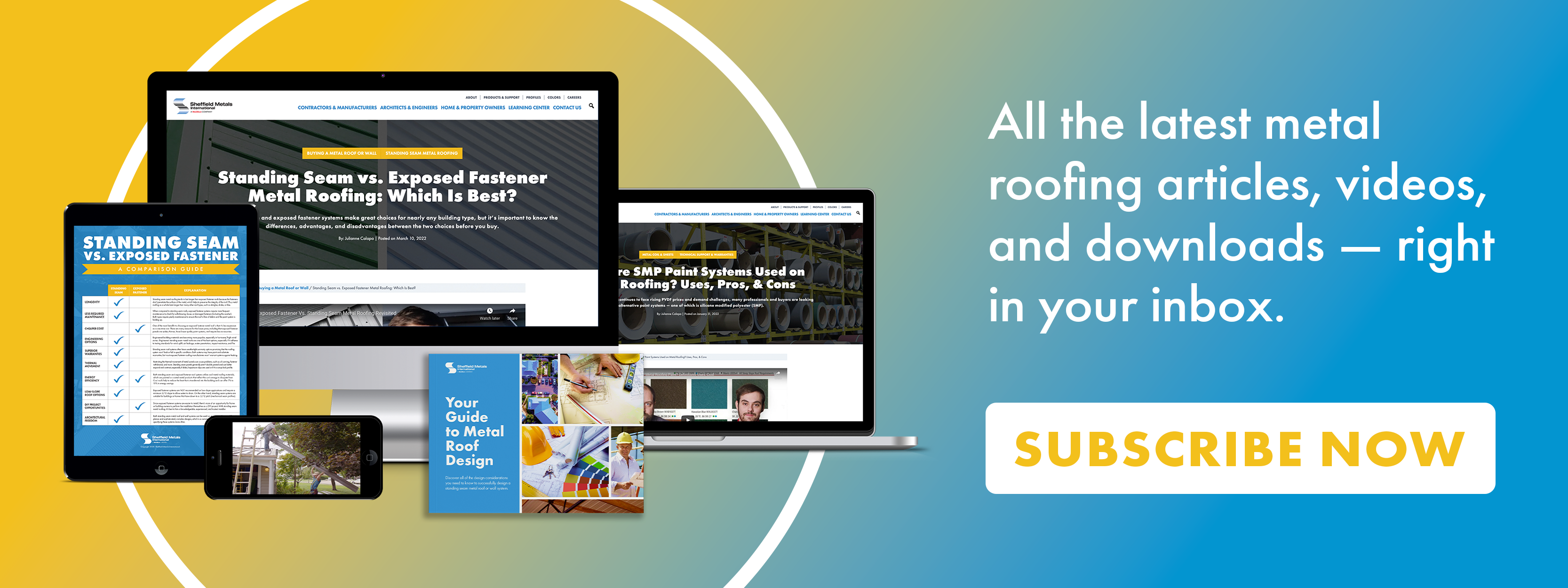
Why Is It Important to Maintain Your Metal Roof?
#1: To Prevent Potential Problems
It’s a fear of every home or building owner: A problem originating on the roof. Not only can problems with a roof cause damage to the property and the items inside of a home or building, but it also results in unwanted and potentially high repair costs. Some of the potential problems with metal roofing are:
- Leaking
- Denting
- Scuffing
- Scratching
- Degradation
- Galvanic corrosion
Regular maintenance performed at least once a year, either by a roof maintenance service* or the home/building owner, can help identify potential problem spots. These areas can then be fixed to prevent the issue from becoming serious or creating a failure in the system.
(*A roof maintenance service, typically provided by the contractor who installed the roof, is the safest option, especially if you don’t have experience with metal roofing maintenance.)
#2: To Prolong the Life of the Roof System
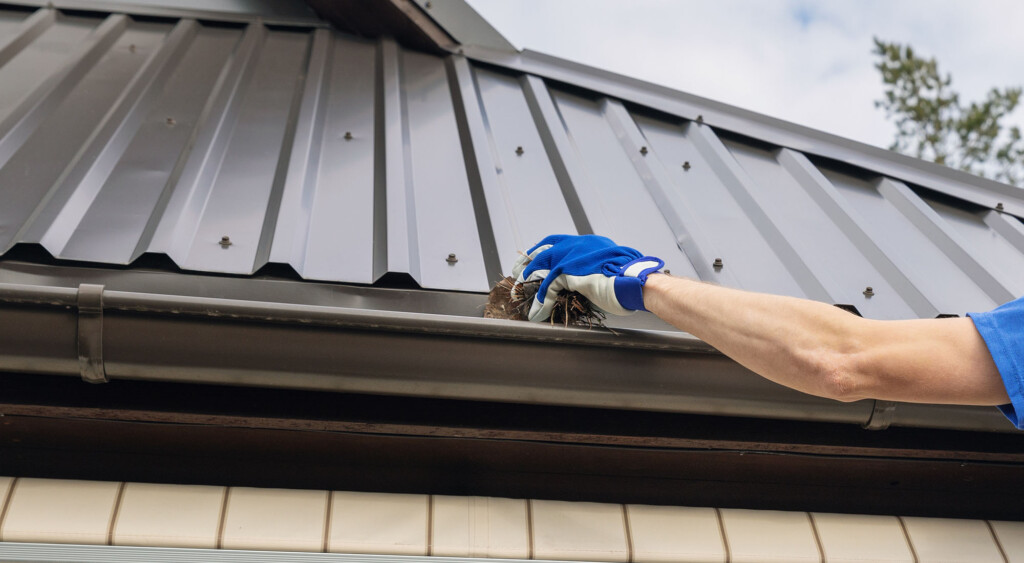
The worst situation you could run into is prematurely needing to replace your entire metal roof. Regularly maintaining and caring for your roof is one of the best ways to prevent this.
Like any product, a regular maintenance schedule will help maintain the integrity of the metal roof and its accessories, and ensure that it continues to perform well and provide protection. There are many scenarios where a metal roof could be subjected to harmful elements, so it’s important to be observant and educated on maintenance that should be performed so you can identify problems and take the necessary steps to correct them.
To ensure the continued performance of your metal roof, perform the following surface-level maintenance tasks on your roof.
#3: To Keep Your Metal Roof Looking Great
It’s most important to ensure your metal roof performs well, but you also want it to look great, right? Nobody wants a roof on their home or business that looks old, dirty, or damaged.
If you’ve paid the cost of a metal roof, it’s just as important to maintain it so you get your money’s worth. A big part of maintaining it revolves around keeping the surface clear of any dirt, dust, or debris that could make your roof look unsightly.
Metal Roof and Wall System Maintenance Basics
Surface Maintenance to Perform on a Metal Roof
Surface maintenance consists of tasks that can be done without a thorough inspection of the roofing structure. There are many home or building owners who might want to do this maintenance on their own, but keep in mind that there are also professional maintenance services available for hire who are well-trained in roof maintenance and safety. If you do decide to do the maintenance yourself, it is very important to consider your safety, especially on steep-slope roofs. Also, metal roofs are very slippery when wet, so keep this in mind if you plan to use any kind of liquid to clean your metal roof.
There are varying opinions on the frequency that maintenance should be performed, but it’s typically dependent on the environment the roof is in. For example, a home in a milder climate, such as Pennsylvania or Indiana, might only need surface-level maintenance once a year or every 18 months. But a building in a more extreme climate, such as Florida or Texas, or one that is in the shade/underneath trees might need maintenance more than once per year depending upon the severity of conditions. Additionally, some warranties even list required maintenance to keep the warranty valid.
Clean Out Gutters & Drains
Gutters and drains are popular spots for leaves, sticks, and other debris to build up and lead to clogging, which creates pooling water accumulation. This standing water can facilitate premature corrosion on nearly every metal roof material. Ensure you clean out your gutters and drains at least once yearly to prevent this situation.
Clean Off Dirt, Mildew, Stains, & Other Elements
Cleaning your metal roof and removing the dirt and other potentially harmful elements that could get stuck on the surface helps extend the life and the look of the roof. This may seem like an easy task, but there are strict processes of how to clean your metal roof safely and correctly so no harm is done to the panels, the building, or yourself.
Remove Leaves & Debris Stuck in Valleys & Dead Spots
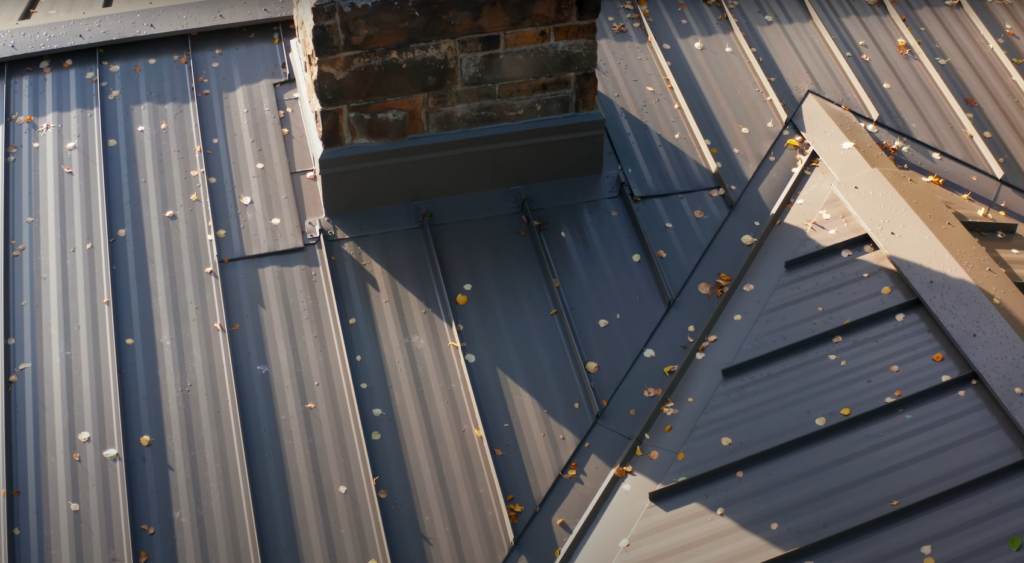
Not only does debris stuck on a roof look unappealing, it can also stain or scratch the paint system on the metal. Check for leaves and branches that could get stuck in valleys or other spots with low slopes or horizontal planes, and remove them promptly.
Remove Branches & Sticks That Are Touching the Roof Surface
Homes or buildings underneath trees require extra care to ensure no branches are touching or scraping the surface of the metal roof. This could lead to scratching or scuffing on the paint system, which is typically not covered by a paint warranty.
Verify That No Other Metals & Materials Are Touching the Roof
It may seem unlikely that metal or other materials could end up on your metal roof, but it’s a possible cause for concern. Different materials coming into contact with a metal roof could lead to interactions resulting in early degradation, staining, and potential failure of a system altogether.
For example, Galvalume® roofing performs best when not in contact with copper, bricks, treated lumber, iron, and concrete. If Galvalume is in contact with one of these and is then introduced to an electrolyte, such as water, it could lead to galvanic corrosion of the anode (the more active material that has its electrons taken away by the less active material and ultimately leads to corrosion). The same goes for dissimilar roofing systems. Confirm with manufacturers of other roofing products, such as treated wood shingles or rubber/cement roofing systems, that their products will not adversely react with a metal roof.
Also, be cautious when other trades are working on or around your roof, such as plumbers, electrical contractors, satellite dish installers, etc., especially if they recommend making any penetrations in your roof’s surface. Any penetrations added to a metal roof should be handled by a professional roofing contractor. To combat adding roof penetrations, which require more attention during maintenance routines, we recommend using non-penetrating mounting solutions such as S-5! clamps.
Look For Scratches, Scuffs, Chipping, Flaking, or Excessive Chalking/Fading
Like anything that has a paint system applied to it, metal roofing could be subjected to scratching, scuffing, flaking, or excessive chalking and fading at any point during its lifecycle. It’s important to check for these to immediately remedy the potential issue and prevent further damage.
Surface scratches can result from several things, such as installer errors or a small branch hitting the roof during a storm. Luckily, many minor scratches on the surface can be covered using a touch-up paint pen that matches the color of the roof. The thing to remember when applying any sort of touch-up paint is that you follow the manufacturer’s recommendations. Touching up a roof without following the manufacturer’s recommendation could make the blemish more unsightly or void the roof warranty altogether.
Additionally, if scratches, scuffs, or any other paint system damage is excessive, do not try to fix the problem and immediately contact the manufacturer.
Structural Maintenance to Perform on a Metal Roof
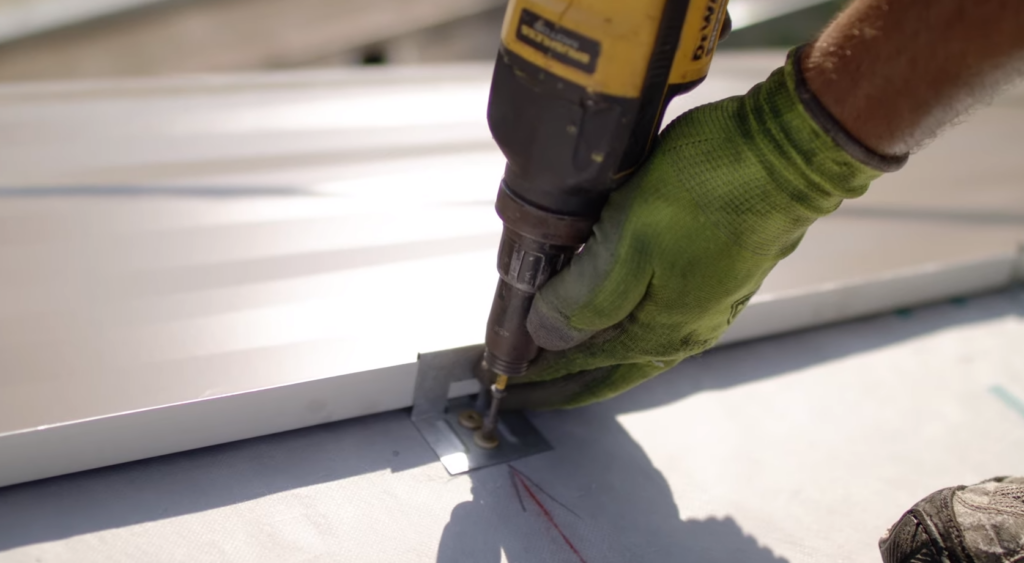
Structural maintenance for a metal roof is more in-depth and typically requires a trained contractor or professional roof maintenance service. Spending a couple hundred dollars every other year is well worth ensuring your safety and your roof’s long-term performance.
How often you should do structural maintenance is difficult to predict because it just depends on the type of metal roof and the stresses it’s subjected to, such as:
- Wind
- Hail or other debris
- High moisture (snow, driving rain, coastal)
- Extreme heat or extreme cold
- Frequent temperature fluctuations
It’s a common practice to have professional structural maintenance performed at least once every two years. Some locations may have longer or shorter periods between regular maintenance, so make sure to have this discussion with your contractor and they will be able to give you a better idea of timing for your specific roof.
Even if you aren’t the person up on the roof performing this maintenance yourself, we think it’s important to know exactly what they will be looking for to ensure your roof is properly maintained. If anything is damaged or needs attention, the contractor should inform you and work to fix the issue.
Checking and or/ Fixing Fasteners, Rivets, & Screws
Fasteners, rivets, and screws used to attach the panels to the structure are engineered to withstand years on a metal roofing system. That said, it’s still important to check them to ensure they aren’t loose, crooked, angled, or missing. This is especially important for exposed fastener roof systems, which should have the fasteners, rivets, and screws checked annually due to the possibility of them backing out from expansion and contraction over time.
Similarly, gasket head fasteners often have an EPDM washer that will corrode from UV exposure over time, which could lead to a potential leak zone. The best fix may just be to replace the fastener altogether.
Checking and/or Fixing Loose or Separating Panel Seams
The integrity of the panels and the seams that hold the panels together will make or break a metal roof system. So it’s important to check that the panels haven’t loosened, dislodged, or moved too much from their original position and that all the seams are still tight and undamaged. The contractors should also ensure that enough space has been allotted for thermal movement for expansion and contraction.
Checking and/or Fixing Loose or Damaged Flashing Materials
Many roof leaks often originate from flashing materials that are damaged, loosened, or missing. You should check to ensure the flashing materials are maintained, sealed well, and in good condition will help prevent problems before they even start.
Checking and/or Replacing Sealant
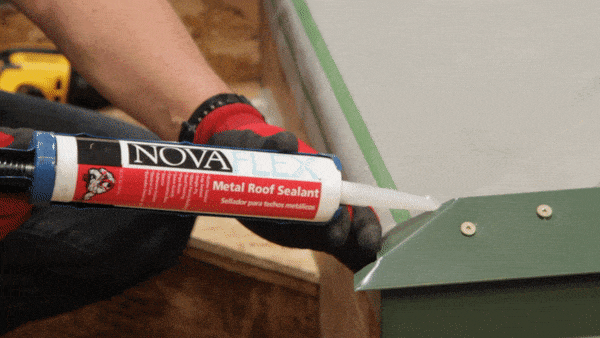
Sealants seal out water, dirt, wind, and other substances that can get into small spaces, making the metal roof as weather-tight as possible. Some sealants, such as non-cracking or UV-resistant options, last for long periods of time, but other sealants may need to be touched up or replaced in some spots on the roof.
Checking Areas Around Penetration Points
Penetration points also have their own specific flashing materials, such as those installed around chimneys, air vents, skylights, or solar panels. It’s important to check the degradation of rubber flashings, such as vent pipe boots, because UV rays will break the material down over time. In addition to checking that the flashing materials are maintained, the maintenance contractor should ensure these roof add-ons haven’t exposed the paint or the metal on the roof to potentially degrading materials, such as chemicals or dissimilar metals.
Looking For Punctures From Falling Debris
The maintenance contractor should also ensure that there aren’t punctures in any of the panels from falling debris, especially if you live in an area prone to extreme weathering events (i.e., high winds, tornadoes, or hurricanes).
Final Thoughts on Metal Roof Maintenance
Regular metal roof maintenance is a critical part of preserving and protecting your investment. Not only does it save you time and make sure your roof continues to look and perform well, but it also ensures that you don’t have to spend money on costly repairs in the future.
Here are some considerations to keep in mind:
- Hiring a professional contractor or metal roof maintenance service is the best way to ensure maintenance is done correctly and safely.
- If you feel uneasy about getting on your roof, don’t do it.
- If you do decide to perform maintenance yourself, ensure a second person stays on the ground while you are performing your maintenance for added safety.
- Homes/buildings in climates with extreme weather require a stricter metal roof maintenance schedule.
- Compared to other roofing materials, metal roof maintenance is very minimal.
- Do a general look over of your roof at least twice per year.
- If you notice a potential issue or a problem area on your roof, contact the contractor or manufacturer before it becomes a bigger problem.
With over 20 years of experience in the metal roofing industry, Sheffield Metals is ready to answer your questions about the maintenance you should be performing on your metal roof.
Contact us today to get in touch with one of our metal roofing specialists!
